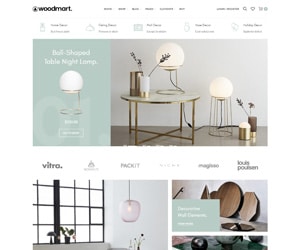How Color Psychology Influences Consumer Trust and Behavior
Building on the foundational understanding from Why Colors and Risks Shape Our Choices Today, this exploration delves deeper into the subtle yet powerful ways color psychology shapes consumer trust and decision-making. Colors operate beneath conscious awareness, subtly guiding perceptions and behaviors that ultimately influence purchasing patterns and brand loyalty. Recognizing these psychological mechanisms enables marketers and designers to craft more effective and ethical strategies that resonate with consumers on a subconscious level.
1. Introduction: Linking Color Perception to Consumer Trust and Decision-Making
Colors evoke immediate emotional responses that serve as trust signals even before the consumer consciously processes a message. For example, the color blue is often associated with professionalism and reliability, which is why many financial institutions incorporate it into their branding. These subconscious cues influence initial impressions, setting a foundation for trust that can determine whether a consumer proceeds with a purchase.
Transitioning from general risk perception to specific trust-building factors, it becomes clear that while consumers may not always articulate their reasons, their reactions are heavily influenced by color cues. Recognizing these signals allows brands to foster confidence through strategic visual choices, ultimately guiding decision pathways in a subtle yet effective manner.
Furthermore, in consumer environments—retail spaces, websites, packaging—subtle color cues activate neural pathways associated with safety and credibility. These subconscious signals can significantly enhance perceived trustworthiness, often more powerfully than explicit messaging.
Understanding the Psychological Foundations of Color and Trust
2. The Psychological Foundations of Color and Trust
Colors evoke a network of psychological associations that influence perceptions of credibility. For instance, green often signals health and sustainability, boosting trust in eco-friendly brands. Conversely, overly bright or mismatched colors can raise doubts about authenticity, eroding confidence.
Cultural differences further complicate this landscape. While white symbolizes purity in Western cultures, it can represent mourning in some Asian contexts. Such variations mean that effective color strategies must be tailored to target audiences, respecting cultural associations to foster genuine trust.
Colors also serve as signals of safety, reliability, and authenticity. For example, shades of blue and green are frequently used in industries where trust is paramount, such as finance and healthcare, because they evoke feelings of stability and reassurance. These associations are deeply ingrained, often rooted in evolutionary survival mechanisms that associate certain colors with safe environments.
Summary of Psychological Associations
| Color | Common Psychological Association |
|---|---|
| Blue | Trust, professionalism, calmness |
| Green | Health, sustainability, safety |
| Red | Urgency, excitement, passion |
| White | Purity, cleanliness, simplicity |
3. Color Choices in Branding and Their Impact on Consumer Confidence
Brands meticulously select colors to evoke specific perceptions. For example, Coca-Cola’s use of red stimulates excitement and appetite, while IBM’s blue underscores trust and stability. These choices are backed by research indicating that color can increase brand recognition by up to 80%.
Case studies reveal that consistent color use enhances perceived integrity. Tesla’s silver and red palette communicates innovation and energy, reinforcing consumer confidence in technological leadership. Such strategic color alignment fosters long-term loyalty, as consumers come to associate specific hues with brand values.
However, misaligned color choices can backfire. For instance, a luxury brand using bright neon colors might be perceived as untrustworthy or unprofessional, leading to erosion of trust. Therefore, understanding cultural and psychological contexts is vital to avoid unintended negative associations.
4. The Influence of Color on Consumer Behavior Beyond Trust
Color impacts not only trust but also the urgency and speed of decision-making. Warm colors like red and orange can create a sense of urgency, prompting quicker purchases—often utilized in clearance sales or limited-time offers. Conversely, cool colors like blue and green tend to encourage prolonged engagement, fostering thoughtful consideration.
Perceived product quality is also influenced by color. A study published in the Journal of Consumer Research found that consumers associate darker hues with premium quality, especially in packaging for luxury goods. This subconscious bias can be leveraged to position products as more valuable.
Beyond the obvious, non-obvious psychological effects emerge from color combinations. Certain pairings, such as complementary colors, can stimulate impulse buying by creating visual excitement, while harmonious schemes promote calmness and trust, facilitating longer browsing times and increased likelihood of purchase.
5. The Neuroscience of Color and Trust: What Brain Imaging Reveals
Neuroimaging studies, including fMRI scans, have shown that colors activate specific brain regions associated with trust and risk assessment. For example, the amygdala, which processes emotional responses, responds more positively to familiar, trustworthy color schemes, reinforcing consumer confidence.
Research indicates that color impacts emotional processing centers, modulating perceived risk. A study in the Journal of Neuroscience demonstrated that blue hues activate areas linked to calmness and safety, reducing anxiety and fostering trust even before consumers read product descriptions.
These findings have practical implications: by designing interfaces with trustworthy color palettes, companies can create more reliable and emotionally resonant user experiences that subtly influence decision-making processes.
6. Ethical Considerations in Using Color to Influence Trust and Behavior
While leveraging color psychology can be highly effective, it raises ethical questions. Persuasive design must balance influence with respect for consumer autonomy. Overly manipulative use of colors—such as exploiting subconscious fears or insecurities—can damage brand integrity in the long run.
“Responsible use of color psychology involves transparency and respect, ensuring that consumers are empowered to make informed choices rather than being covertly manipulated.”
Developing ethical guidelines—such as avoiding deceptive color cues or misleading associations—helps maintain trust and supports sustainable marketing practices. Transparency in how colors are used can foster a deeper, more genuine connection with consumers.
7. From Consumer Trust Back to Broader Decision-Making: Connecting the Dots
Trust influenced by color not only impacts immediate decisions but also interacts with other risk factors, such as price sensitivity or brand reputation. When consumers perceive a brand as trustworthy through its color cues, they are more likely to overlook minor risks or uncertainties, promoting loyalty over time.
The cascading effect of color-induced trust can lead to long-term brand loyalty, as consumers develop emotional bonds that extend beyond individual transactions. This layered trust influences broader decision-making processes, including willingness to recommend or defend a brand.
Understanding the deep psychological and neural mechanisms behind color perception enhances our grasp of why colors and risks shape choices today. It underscores the importance of ethical, culturally aware design strategies that respect consumer autonomy while leveraging subconscious cues for mutually beneficial outcomes.














